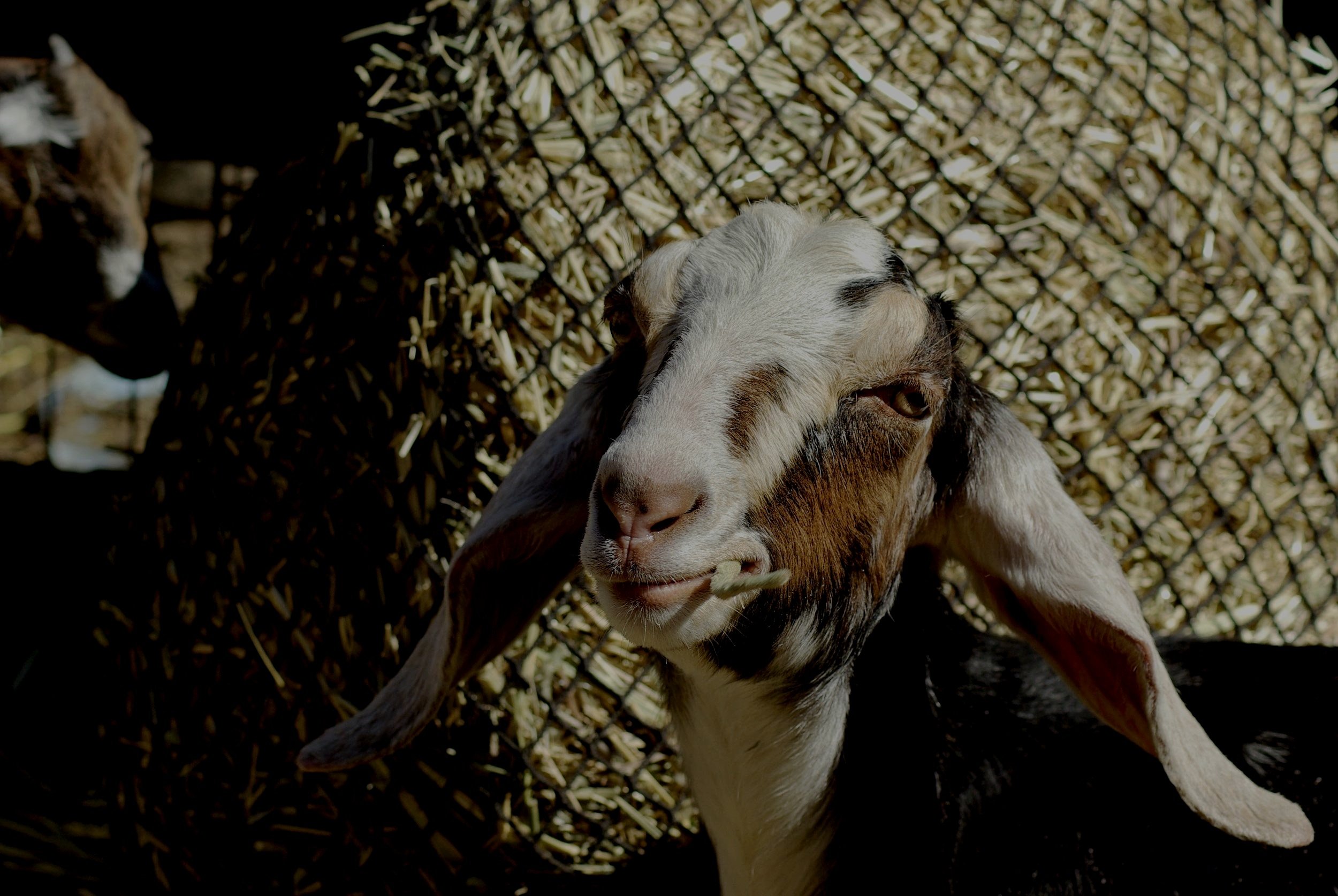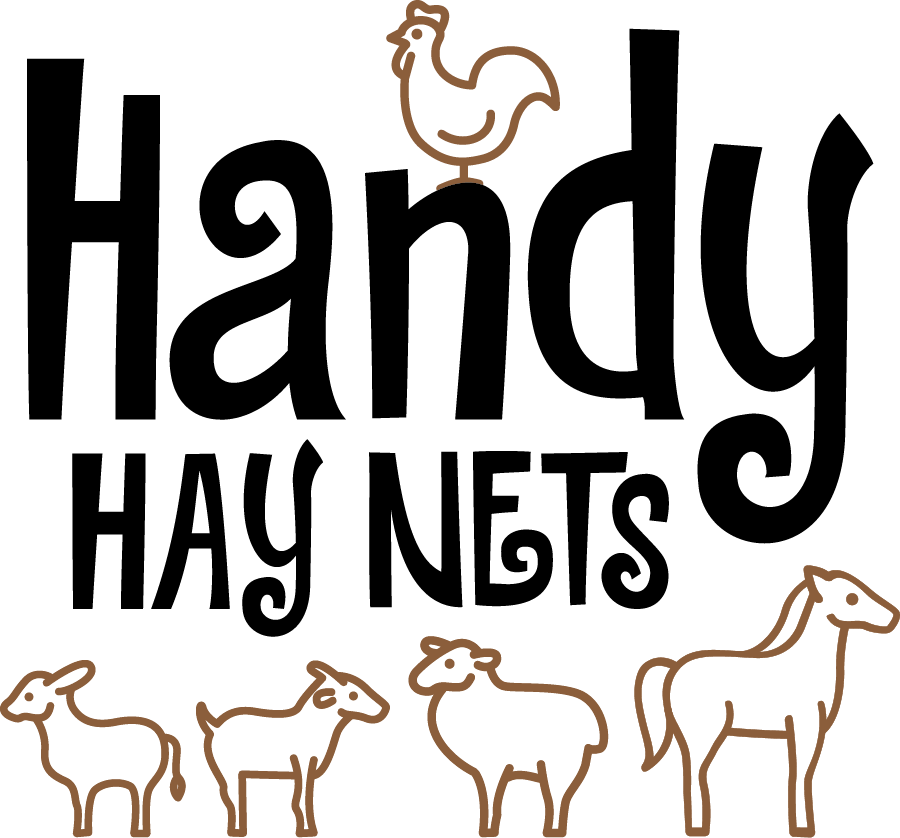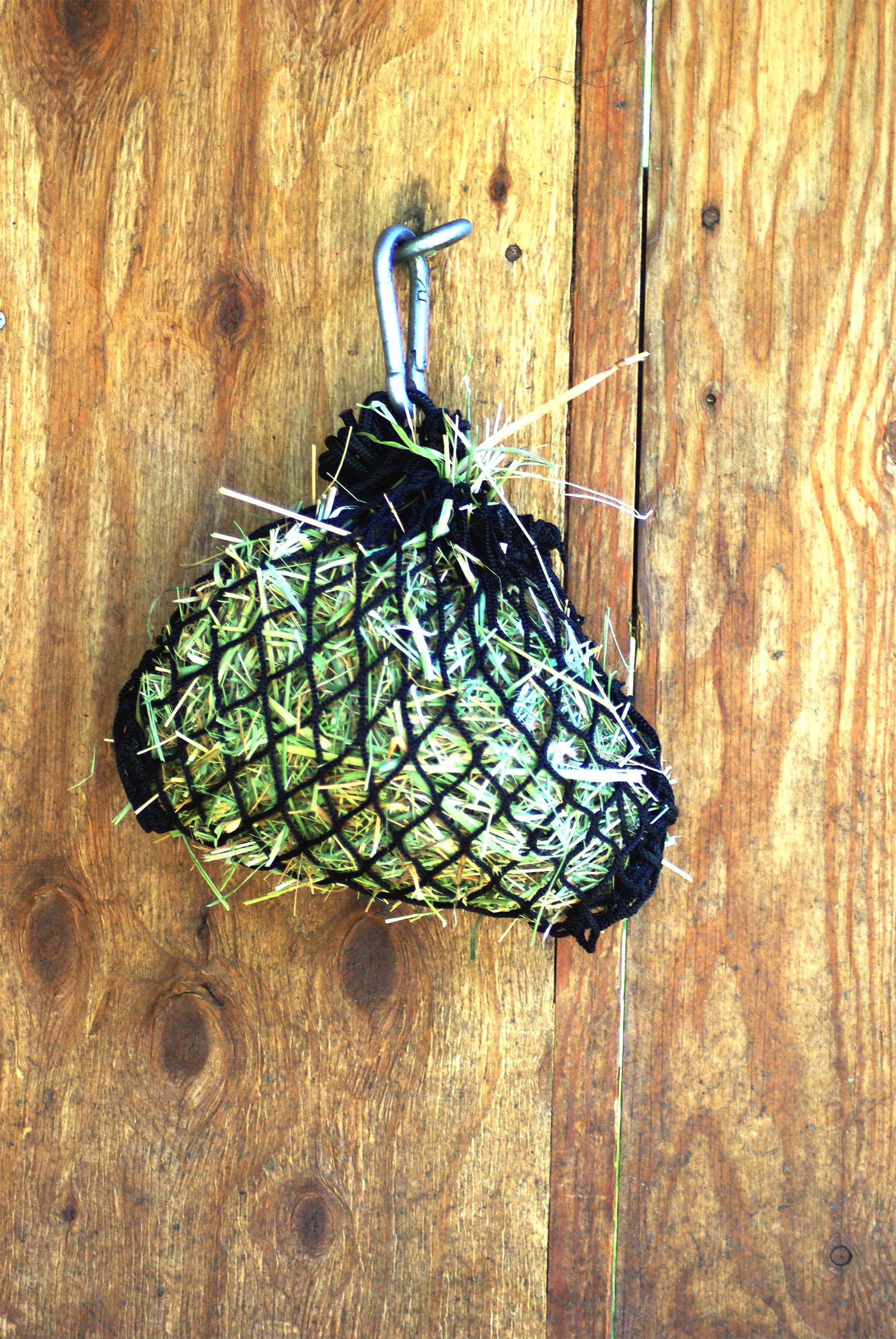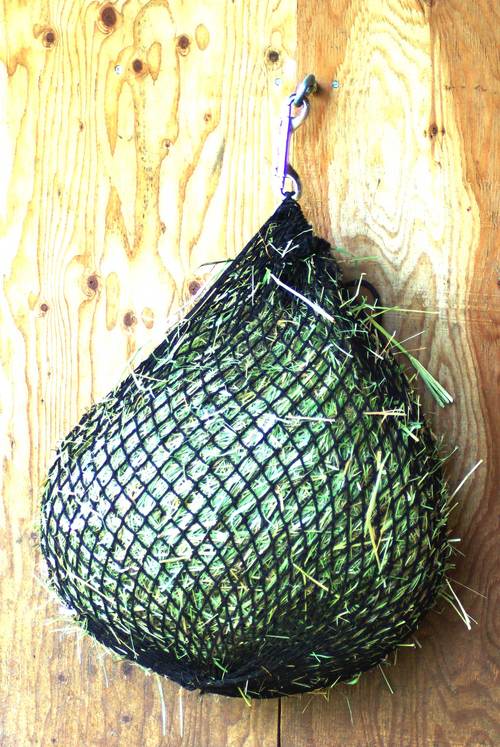
Handy Hay Nets for Goats, Sheep, Alpacas, Rabbits & Chickens
Handy Hay Nets work great with small and large flocks of animals. With our slow feeder hay bags you can more easily keep animals together, saving you time!
Your animals will settle into a nice calm routine grazing from our hay bags. Our customers have told us they have the best success when they provide many bags around their animals' pens/enclosures. This way, many different animals can eat at the same time and everyone gets what they need. Shy animals will get enough and overweight animals will trim down.
The other set-up we've seen is to hang a bale bag off of a pulley system so that many animals can eat around it. People with goats are having great success with this set-up - SEE IT HERE.
Our small 1" net bags simulate grazing on pasture. This constant supply of forage means you don't need to rush home to feed because there are no hungry or stressed animals!
With Handy Hay Nets your animals will be able to regulate their body temperature better during cold weather.
“I have 7 goats and have been using Handy Hay Nets for 12 days now and have cut back from 10 bales to 5.”
What You Need to Know…
Download the pdf of this guide here and keep a copy out at the barn.
When you first introduce animals to slow feeder hay bags, make sure there is loose hay available as well. Never feed a hay bag if your animal is hungry as this will cause stress. We recommend 3/4 of what you would normally feed in addition to the hay bag.
It can take anywhere from a week to a month for animals to really get the hang of eating from our hay nets, but most people find that when they do, they prefer their bags to loose hay!
Hungry animals will often paw or bite through the netting. As they adjust, they use their teeth and lips to pull the hay through the holes.
Don’t pack the bag too tight or they won't be able to get the hay out. Pull some hay through the netting to help them get the idea.
Quick drops in temperature and very cold weather can require your animals to need additional loose hay.
Don’t let your Handy Hay Net run out. Hay becomes harder to get out as the bag empties due to all the broken bits. Empty them out so your animals can clean it up.
Trickle Feeding means having a constant supply of forage available at all times. Trust that your animals will adjust over time and settle into a balanced weight.
Farm Animal Slow Feeder Netting Guide
Check out the farm animal success stories here.
If you have sheep and goats you know that they won't eat hay that has been trampled and defecated on.
Handy Hay Nets prevent waste and help you reduce costs by more than 50%*.
*according to our test group
Small farm owners prefer large bags or bale bags.
According to SHEEP101...
"A big difference between sheep and goats is their foraging behaviour and diet selection. Goats are natural browsers, preferring to eat leaves, twigs, vines, and shrubs. They are very agile and will stand on their hind legs to reach vegetation. Goats like to eat the tops of plants. Sheep are grazers, preferring to eat short, tender grasses and clover. Their dietary preference is forbs (broadleaf weeds) and they like to graze close to the soil surface. Goats require a more nutritious diet." READ MORE...
By using slow feeder hay nets and minimizing hay waste you will also spend less time mucking pens/stalls. The environment becomes more hygienic and less muddy as the animals aren't creating topsoil by tramping manure and hay into the ground.
Handy Hay Nets can also help prevent heavy chaff in the fleece of sheep, especially around their sensitive eyes.
Llamas and Alpacas
People are telling us that their Llamas and Alpacas LOVE their Handy Hay Nets!
While these animals are referred to as 'pseudo-ruminants', because they are actually camelids, they do very well also having their feed in small amounts over a longer period of time.
Here is one great resource we've found about Alpacas, and specifically about ulcers. What is interesting to note is that they don't mention slow feeding as another preventative measure for these animals’ very sensitive stomachs, but many people are not yet tuned into this wonderful and natural grazing alternative.
You will also find some more scientific information about nutrition in this terrific article written by Nancy Irlbeck, Ph.D..










